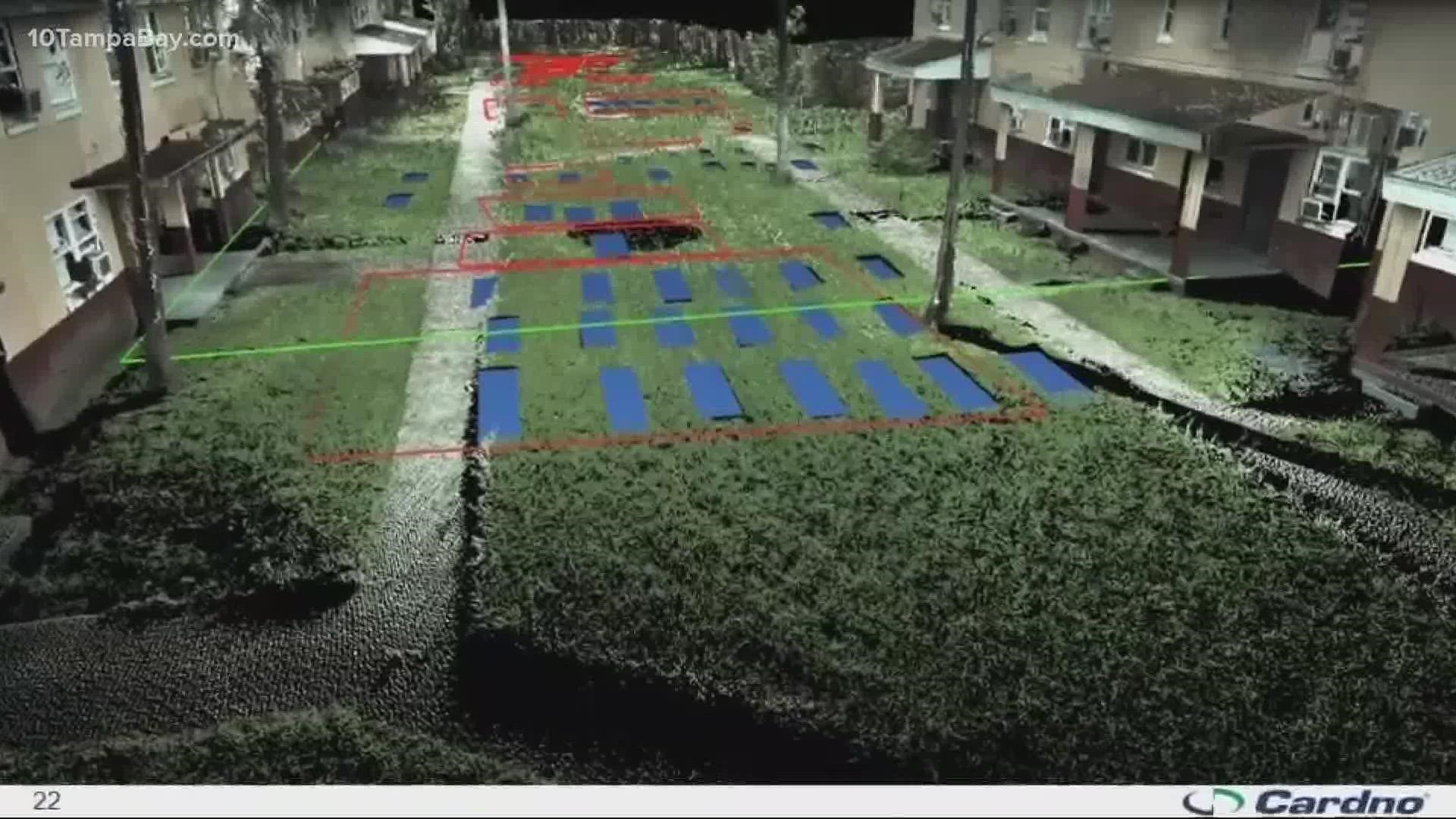TAMPA, Fla. — A new report prompted by ongoing searches for erased and destroyed African American cemeteries across the Tampa Bay area reveals there are at least 45 additional unmarked cemeteries and burial grounds throughout Hillsborough County.
“We were very focused on Hillsborough County. However, this is an issue for all counties in Florida and every state,” said University of South Florida anthropologist Erin Kimmerle, lead researcher on the report.
Kimmerle presented the findings during a Wednesday morning Hillsborough Board of County Commissioners after about two years of research.
Commissioner Ken Hagan requested the research after archaeologists used ground-penetrating radar to detect hundreds of graves from multiple destroyed African American cemeteries. He wanted to know how many lost cemeteries might exist on Hillsborough County property.
“I believed then as I do now that we have a moral obligation to see if indeed any of these sites exist on land we manage. We owe that to the families and the community as a matter of human decency,” Hagan said.
Kimmerle’s research revealed of the 45 sites, 15 were white cemeteries, 14 were African American/Afro-Cuban, “Colored,” or “Negro” cemeteries. Three were white and had “colored” sections.
Researchers used a myriad of data including maps, tax and property records and other historical records to identify the cemeteries and burial grounds. However, many cemeteries did not have exact addresses, so while they have a general idea where some might be, exact locations are not available for all.
Researchers found at least two cemeteries on county-owned land: Lewis Family Cemetery in Lithia and an unnamed cemetery near Carney Memorial. However, Kimmerle said many unmarked cemeteries were not on county-owned land.
Others were located on property belonging to the Hillsborough County School Board, city of Tampa, Aviation Authority, private or unknown property.
“…The approach that we used, and I think the action that the board has taken by reviewing this issue and these cemeteries could be reviewed as a model to other areas,” Kimmerle said.
Ultimately, Hagan made a motion to share all research with impacted cities, agencies and jurisdictions and ultimately to the public. He also asked the board to authorize the second phase of this research/investigation, including use of ground-penetrating radar at the two county-owned sites. He asked for a final report by the end of 2022 at which time they can create a working group to continue to address this issue.
“I think the county has a tremendous opportunity here to pay respects to those that may have been forgotten to history at this point,” Commissioner Stacy White said.

